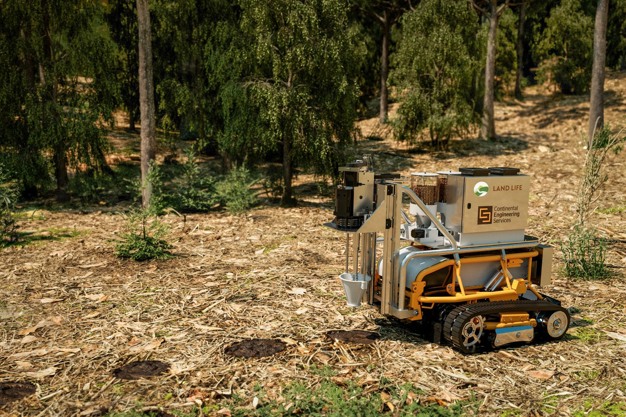Continental is developing a tree-seeding robot together with the nature restoration company Land Life to mitigate the effects of deforestation. The robot can sow at a rate of one tree seed per minute, with the remote-controlled vehicle placing up to 60 pits in the ground per hour.
Continental's in-house engineering and development services provider Continental Engineering Services (CES) and Land Life are collaborating to bring this robot to the market for the first time. Land Life will contribute its in-depth expertise in nature restoration projects. CES, on the other hand, is developing the automatic drilling and seeding module for sowing the seed balls. A robot vehicle from the German manufacturer Stella Engineering, which is already available in the market, serves as the automated driving unit that carries the robot.
Martin Poettcher, Head of Business Center GreenTech at CES said: "We are pleased to partner with Land Life to jointly develop a sustainable solution for the preservation and protection of vital ecosystems."
According to a monitoring report by the World Resources Institute (WRI), global forest loss increased by 24 percent in 2023: from 22.8 million hectares in 2022 to 28.3 million hectares in 2023. The loss of tropical rainforests is particularly serious. In total, around 37,000 square kilometers (3.7 million hectares) disappeared in 2023 – a forest area much larger than Belgium. According to the WRI, the world has lost three to four million hectares of tropical forest per year over the past two decades. Areas of mature rainforest are particularly important for biodiversity, carbon storage, and the regulation of regional and local climate impacts.
Because of the serious effects climate change has, with forest fires and also the ongoing clearing of forests, the restoration of ecosystems has never been more urgent. However, conventional reforestation methods are often impractical, especially in inaccessible terrain. More advanced solutions are needed. This is where the seeding robot offers new possibilities for restoring vital tree populations – thus protecting climate and biodiversity.
Harrie Lövenstein, Head of R&D at Land Life explains that: "Our collaboration with CES will strengthen biodiversity while expanding natural ecosystems. This synergy of CES' automotive know-how with Land Life's reforestation background is advancing the approach to autonomous, high-quality nature restoration worldwide."
The sowing robot relies on a fully automatic direct sowing method. The drilling and sowing module developed by CES is at the heart of the automated sowing machine. And this is how it works: first, ground-covering weeds and grasses are removed. The robot then drills a hole at the optimum depth and width for the soil and tree. A seed ball is dropped into the drilled hole using compressed air, and the soil that was initially drilled out is then emptied back over the seed. The whole process takes less than a minute.
For more information:
Continental
www.continental.com
